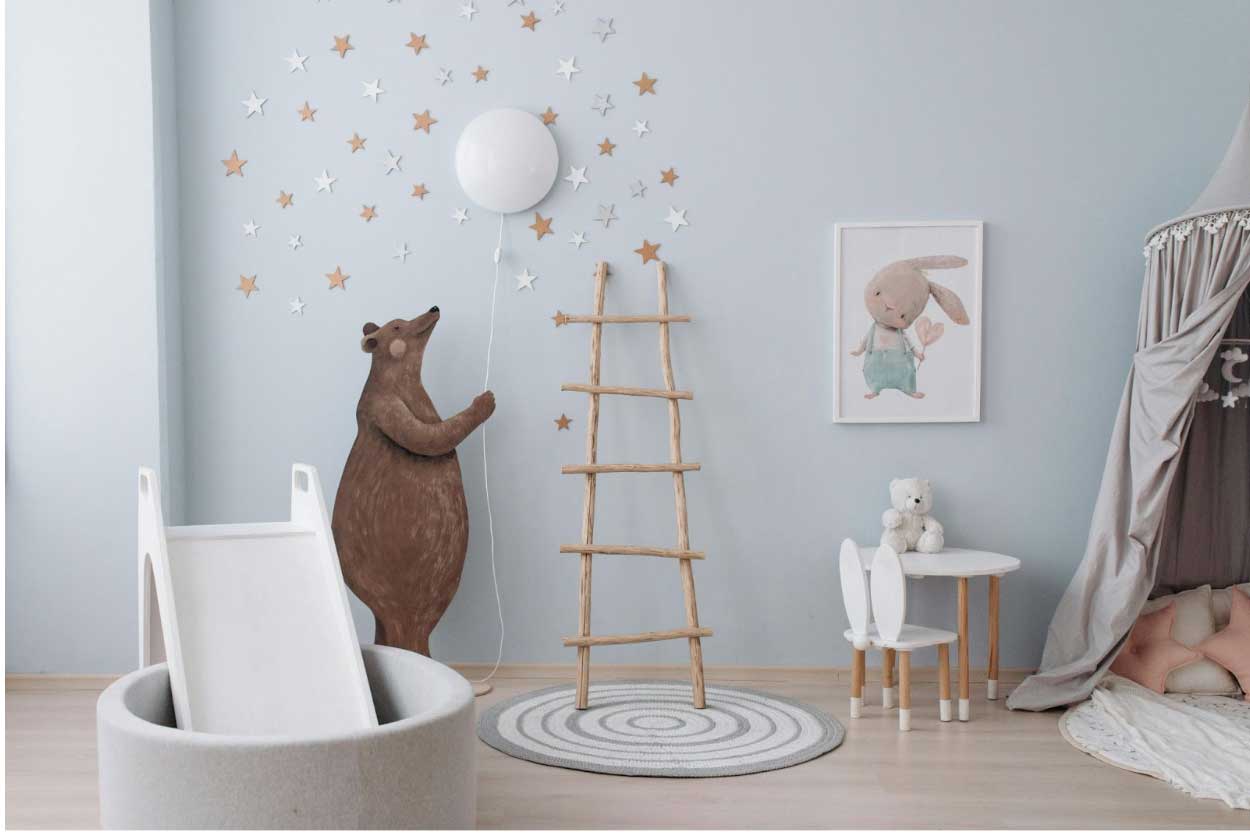Foundations of a Safe and Stylish Nurserya
Introduction: Why the Nursery is More Than Just a Room
Creating a nursery is one of the most meaningful projects a parent undertakes. It’s not just a room — it’s a sanctuary where your baby will grow, explore, and feel secure. Achieving the perfect balance between safety, style, and smart design can feel overwhelming, but with the right knowledge, you can master this task with confidence.
This first part covers everything from safety essentials to style basics and sets the foundation for a nursery that’s as beautiful as it is functional.
The Non-Negotiable Pillar: Safety First
Baby-Proofing Begins Before Baby Arrives
Before adding the cutest decor or picking furniture, safety must be the guiding principle. Infants are naturally curious and vulnerable, so every choice impacts their wellbeing.
-
Certified Non-Toxic Materials: Always opt for furniture and paints certified free from harmful chemicals such as VOCs (Volatile Organic Compounds), formaldehyde, and lead. Look for Greenguard Gold or similar certifications.
-
Stable, Sturdy Furniture: Choose cribs, changing tables, and shelving units with a low center of gravity to prevent tipping. The Consumer Product Safety Commission (CPSC) sets stringent standards for cribs—ensure your crib model complies fully.
-
Cord and Window Blind Safety: Strings and cords can be strangulation hazards. Use cordless blinds or secure cords well out of reach.
-
Electrical Safety: Install outlet covers and keep cords hidden or secured. If adding smart nursery tech, ensure devices meet electrical safety standards.
Table 1: Top Safety Certifications and What They Mean
| Certification | Description | What to Look For |
|---|---|---|
| CPSC (Consumer Product Safety Commission) | Sets mandatory safety standards for cribs, toys, furniture | Crib slat spacing, no sharp edges, sturdy construction |
| Greenguard Gold | Limits chemical emissions for indoor air quality | Paints, furniture, flooring, textiles |
| ASTM International | Voluntary standards for toys, furniture, safety equipment | Durable, non-toxic, safe designs |
| JPMA (Juvenile Products Manufacturers Association) | Ensures juvenile products meet performance standards | Cribs, strollers, carriers |
Style That Grows With Your Baby: Timeless Over Trendy
Many parents make the mistake of chasing nursery trends that quickly fade, leading to costly and unnecessary redesigns. Instead, focus on timeless style:
-
Neutral Color Palettes: Soft whites, greys, and pastel shades create a calm atmosphere and provide a versatile backdrop as your child grows.
-
Classic Furniture Shapes: Choose pieces with clean lines and minimalist aesthetics. This ensures they can adapt from nursery to toddler room with a few tweaks.
-
Quality Over Quantity: Invest in a few statement pieces rather than filling the room with disposable decor.
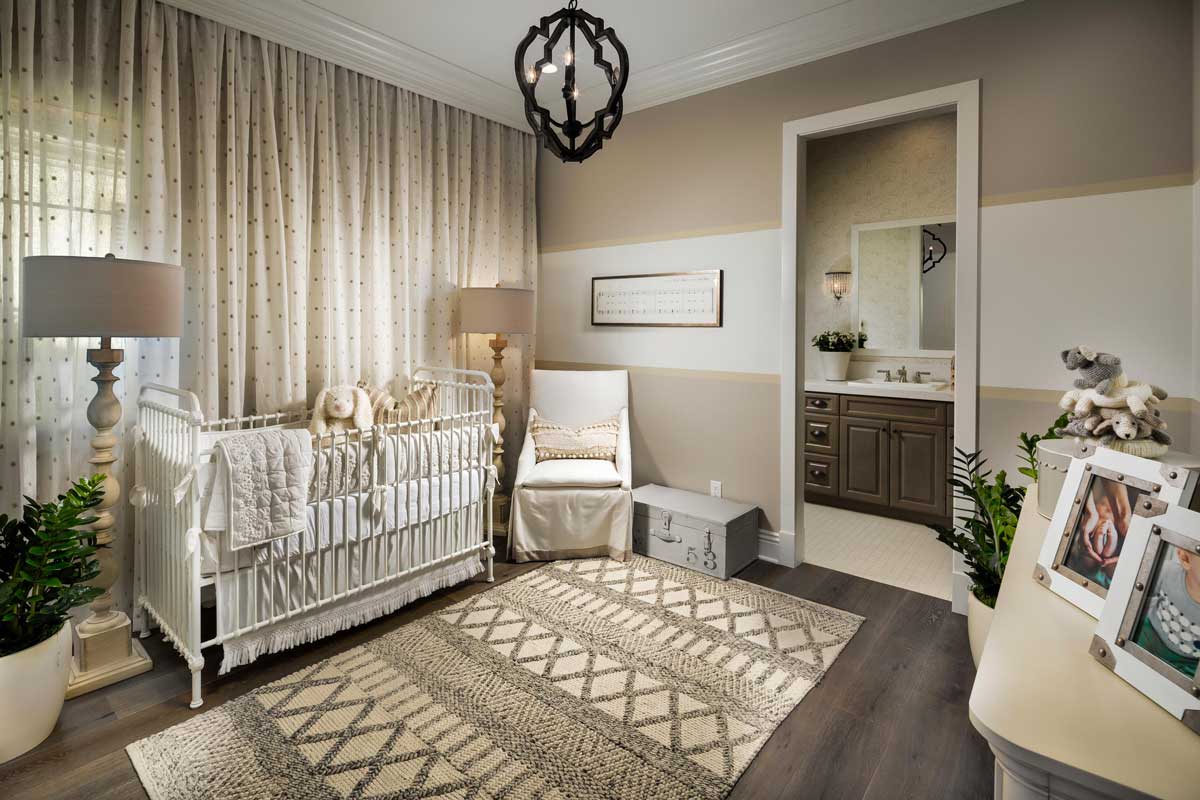
Creating the Ultimate Nursery: Safety, Style, and Smart Design Tips
Color Psychology: The Science Behind Soothing Spaces
Colors profoundly affect mood and behavior, even in babies.
-
Blues and Greens: Promote calmness and restful sleep — perfect for nap times.
-
Soft Yellows: Encourage happiness and creativity but should be used sparingly to avoid overstimulation.
-
Warm Neutrals: Beige, taupe, and soft browns foster warmth and coziness.
Bright, saturated colors are best reserved for small accents or play areas to stimulate engagement without overwhelming.
Furniture Must-Haves for a Functional Nursery
The Crib: The Centerpiece
-
Adjustable mattress heights to keep baby safe as they grow.
-
Convertible models that transition from crib to toddler bed extend usability.
Changing Table or Station
-
Ensure it has safety rails and easy access to diapers and wipes.
-
Consider a changing pad with washable covers for hygiene.
Rocking Chair or Glider
-
A comfortable seat is essential for feeding and soothing.
Storage Solutions
-
Baskets and bins keep toys, clothes, and supplies organized and accessible.
Smart Design Principles to Consider Early
-
Zoning: Separate areas for sleep, play, and diaper changing optimize workflow and safety.
-
Lighting: Soft, adjustable lighting helps transition between day and night routines. Nightlights can comfort babies during midnight awakenings.
-
Ventilation and Air Quality: Use air purifiers or humidifiers to maintain a healthy environment. Avoid heavy curtains that trap dust.
-
Flooring: Soft rugs with washable, hypoallergenic materials add comfort and safety.
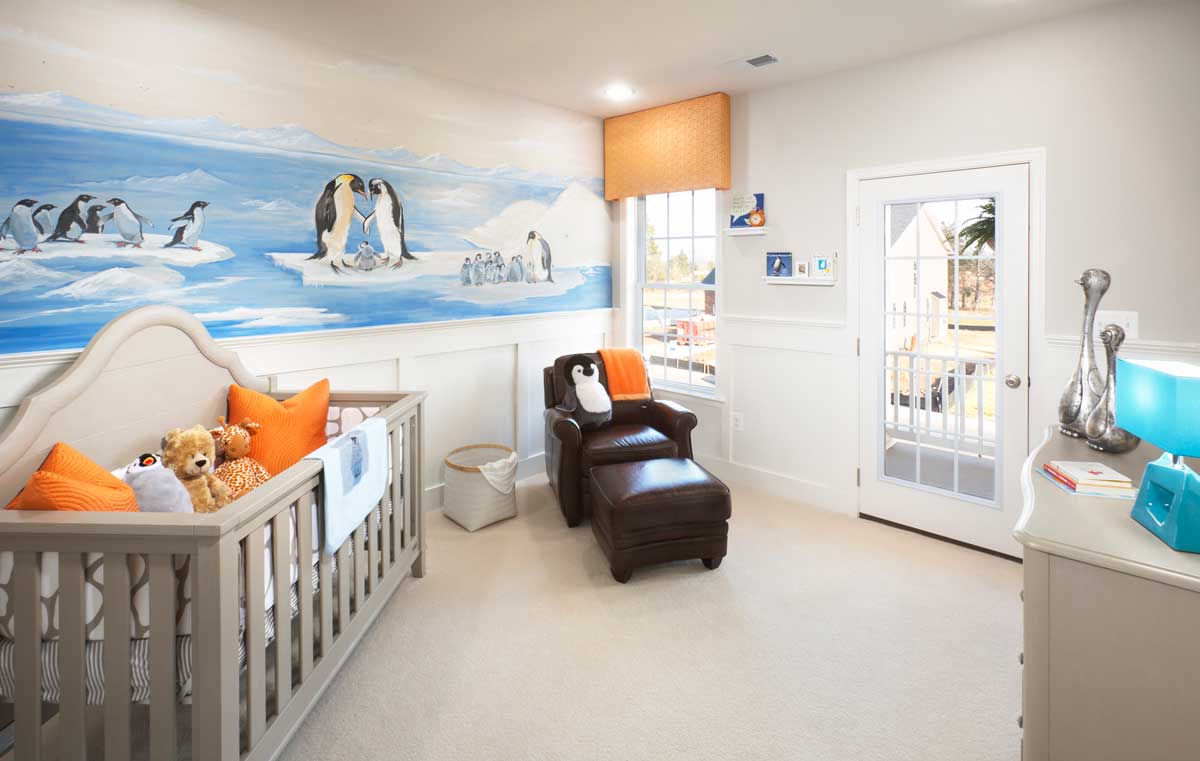
Creating the Ultimate Nursery: Safety, Style, and Smart Design Tips
Table 2: Safety Checklist for Your Nursery Setup
| Safety Aspect | Action Item | Checkpoint |
|---|---|---|
| Crib Compliance | Confirm certification and mattress fit | CPSC and JPMA labels present |
| Window Safety | Install cordless blinds or secure cords | No dangling cords within baby’s reach |
| Electrical Safety | Use outlet covers and hide cords | Test all outlets and devices |
| Non-Toxic Paints & Materials | Choose Greenguard Gold certified products | Review product labels |
| Furniture Stability | Anchor dressers and shelving | Test for tipping resistance |
| Fire Safety | Smoke detectors installed nearby | Test alarms monthly |
The Emotional Touch: Personalizing Your Nursery
The nursery should feel like a warm hug — personal, welcoming, and full of love.
-
Incorporate family heirlooms or custom art.
-
Use soft textiles like knitted blankets or hand-sewn pillows.
-
Display framed photos or name plaques for a personal touch.
Creating a nursery that prioritizes safety without sacrificing style is achievable with mindful choices. Certified materials, stable furniture, and strategic layout form the backbone of your baby’s safe haven. At the same time, timeless colors and quality furnishings ensure the room evolves with your child, reducing waste and expense.
Smart Design Tips to Maximize Space and Comfort
Introduction: The Power of Smart Design
A nursery is not just a baby’s space — it’s a functional hub for parents and caregivers. Maximizing every inch while ensuring comfort and convenience is crucial. Smart design techniques help create a nursery that grows with your child, making daily routines easier and more enjoyable.
In this part, we’ll explore ingenious design strategies, multi-functional furniture, technology integrations, and clever storage solutions that transform your nursery into a masterclass of efficiency and comfort.
Designing for Efficiency: Ergonomic Layouts for Parents and Baby
Why Ergonomics Matter
Long hours spent feeding, changing, and soothing require a nursery layout that reduces physical strain and enhances workflow.
-
Key Zones: Position the crib, changing station, and feeding chair within easy reach. This minimizes unnecessary steps and awkward movements.
-
Safe Pathways: Ensure clear walking paths free of clutter or tripping hazards, especially during nighttime awakenings.
-
Height Considerations: Choose changing tables and shelves at comfortable heights to avoid back strain during diaper changes and cleanups.
Space Planning Tip: The “Triangle of Care”
Imagine a triangle connecting the crib, changing area, and feeding chair. Keeping these points close yet distinct creates a natural, ergonomic workflow for caretakers.
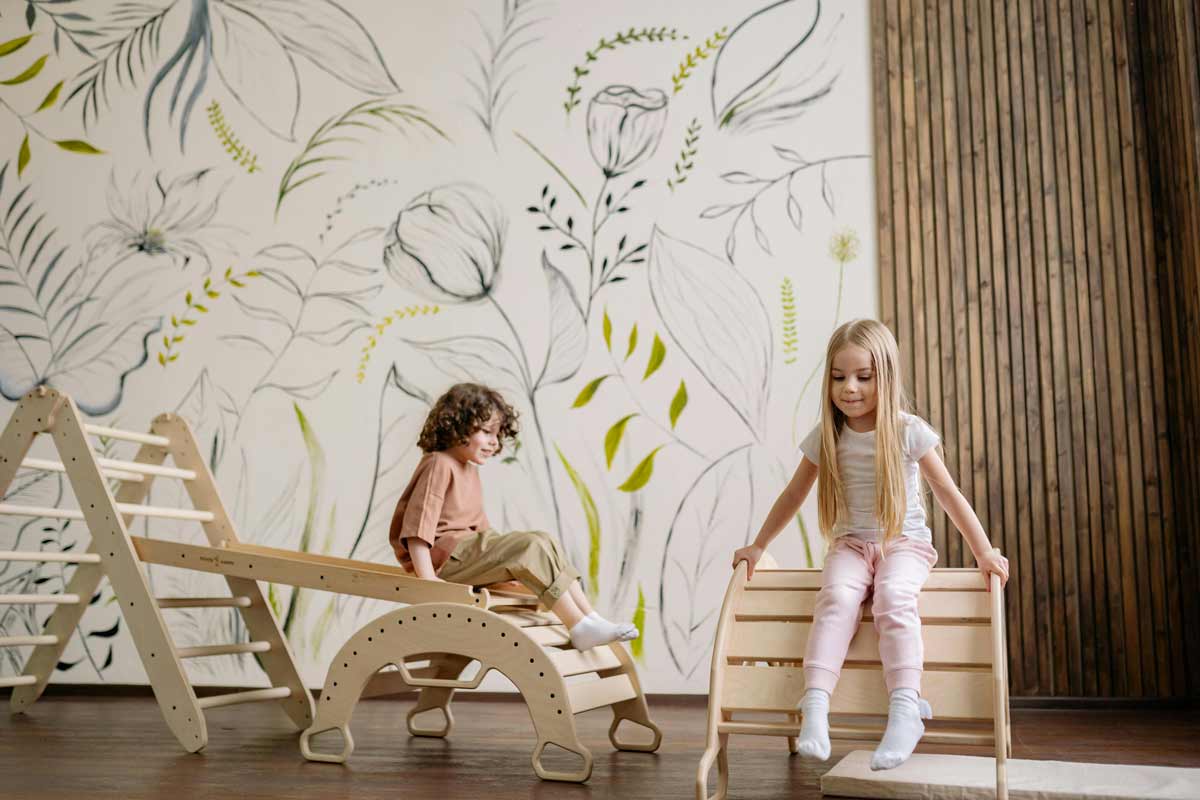
Designing-Magical-Nursery-&-Playroom-Spaces
Multi-Functional Furniture: The Game-Changer for Small Nurseries
Convertible Cribs and Beds
Investing in convertible furniture can save money and space.
-
Cribs that transition into toddler beds or daybeds extend use for years.
-
Some models even convert into full-sized beds as children grow.
Storage-Integrated Pieces
-
Changing Tables with Drawers: Combine changing space with built-in storage for diapers, wipes, and clothes.
-
Ottomans and Benches with Hidden Storage: Perfect for toys and blankets.
-
Bookshelves with Low Shelves: Encourage early reading habits while serving as a display area.
Clever Storage Solutions to Tame Clutter
Nurseries can quickly become cluttered with clothes, toys, diapers, and supplies. Smart storage keeps things tidy and accessible.
-
Wall-Mounted Shelves: Free floor space and provide easy access to essentials.
-
Clear Bins and Baskets: Visual organization helps locate items quickly. Label bins for diapers, clothes, toys, etc.
-
Under-Crib Storage: Utilize low-profile containers for seasonal clothes or spare bedding.
-
Pegboards and Hooks: For hanging lightweight items like hats, bibs, or bags.
Incorporating Technology and Smart Devices
Technology can streamline nursery management and improve safety.
-
Smart Monitors: Video and audio monitors with temperature sensors, night vision, and two-way communication enhance peace of mind.
-
Automated Lighting: Dimmable lights or motion-activated nightlights make nighttime feedings less disruptive.
-
Air Quality Monitors: Track humidity, allergens, and pollutants to keep the air safe and fresh.
-
Smart Thermostats: Maintain consistent temperature for optimal baby comfort and energy efficiency.
Creating Sensory-Friendly Zones for Early Development
Nurseries can be designed to stimulate development while remaining calming.
-
Tactile Areas: Soft rugs, textured pillows, and sensory toys promote tactile exploration.
-
Visual Zones: Use mobiles, gentle patterns, and color contrasts to develop visual tracking skills.
-
Auditory Spaces: Incorporate white noise machines or soft music players to soothe and stimulate hearing.
-
Movement Areas: Safe floor space for tummy time and crawling encourages motor skills.
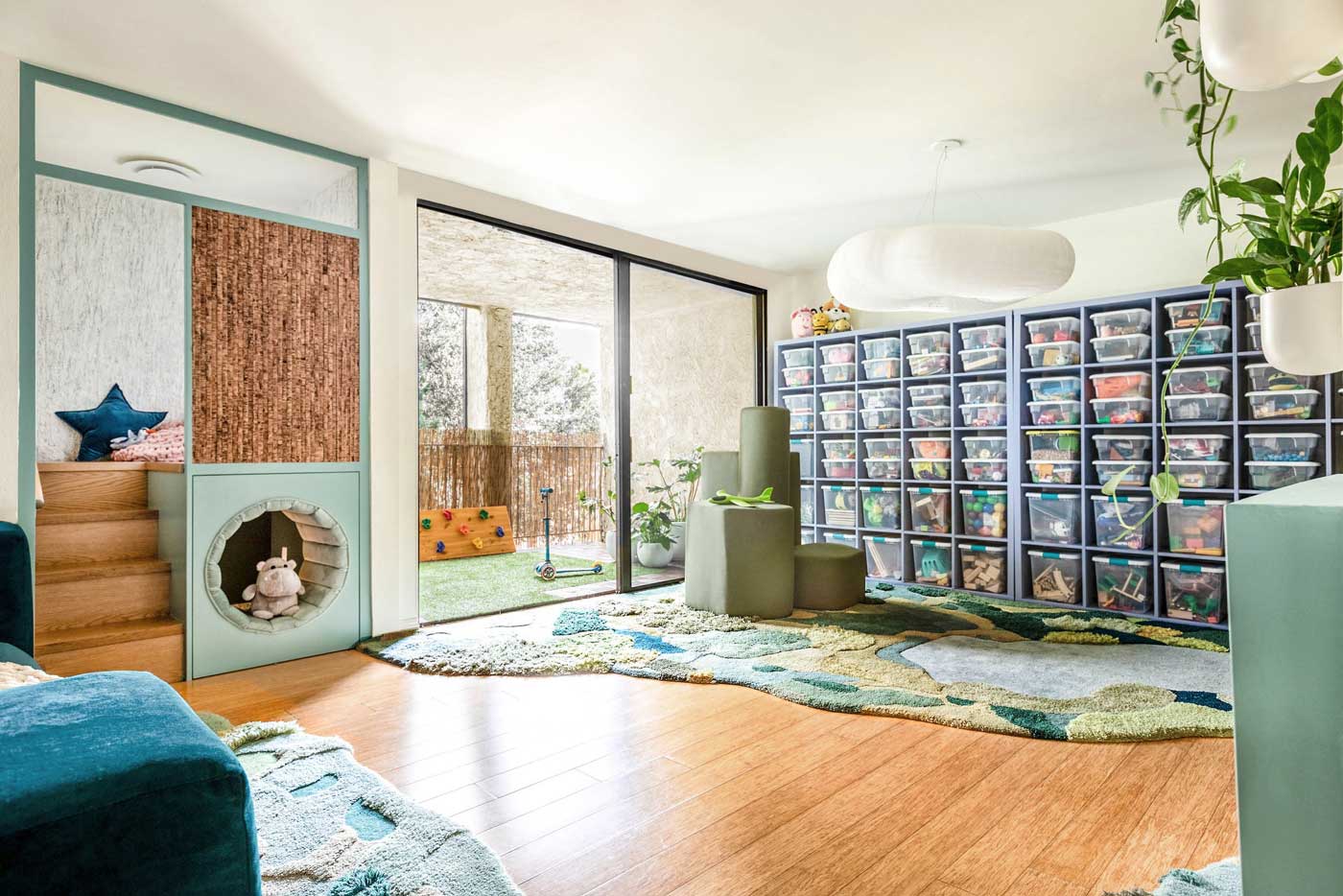
Designing-Magical-Nursery-Playroom-Spaces
Table 1: Smart Nursery Furniture Options Compared
| Furniture Type | Key Features | Pros | Cons | Price Range |
|---|---|---|---|---|
| Convertible Crib | Converts to toddler/full bed | Long-term use, cost-effective | Initial cost higher | $300–$900 |
| Changing Table with Storage | Drawers/shelves built-in | Convenience, space-saving | Bulkier footprint | $150–$500 |
| Storage Ottoman | Hidden storage, multipurpose | Dual function, stylish | Limited storage capacity | $100–$400 |
| Smart Baby Monitor | Video, temperature, motion sensors | Enhanced safety, remote access | Requires Wi-Fi, battery concerns | $100–$300 |
| Wall-Mounted Shelves | Space-saving, accessible | Frees floor space | Requires installation | $30–$150 |
Lighting Design: Balancing Function and Mood
Lighting plays a critical role in nursery ambiance and routine management.
-
Layered Lighting: Combine ambient ceiling lights, task lights (e.g., reading lamps), and accent lights (nightlights).
-
Dimmer Switches: Control light intensity for naps and nighttime feedings.
-
Soft, Warm Bulbs: Mimic natural light and reduce stimulation. Avoid harsh fluorescents.
-
Blackout Curtains: Support better daytime naps by blocking external light.
Flooring: Safe and Comfortable Underfoot
Flooring should be easy to clean, soft, and hypoallergenic.
-
Cork Flooring: Naturally soft, warm, and antimicrobial.
-
Engineered Hardwood with Rugs: Durable with soft zones created by washable area rugs.
-
Foam Play Mats: Provide cushioned spaces for playtime, easy to clean, and portable.
Table 2: Top Tech Gadgets for Modern Nurseries
| Gadget | Function | Benefits | Considerations |
|---|---|---|---|
| Video Baby Monitor | Real-time audio/video monitoring | Peace of mind, remote supervision | Wi-Fi dependency, privacy concerns |
| Smart Thermostat | Temperature control | Energy savings, consistent comfort | Installation required |
| White Noise Machine | Soothing sounds to promote sleep | Improved sleep quality | Volume control important |
| Air Purifier | Removes allergens and pollutants | Healthier air, reduces allergies | Filter replacements cost |
| Smart Nightlight | Motion-activated, adjustable brightness | Minimizes night disruptions | Battery or plug-in options |
Expert Tip: Involve Your Partner and Family in Design Choices
Creating a nursery should be a joyful, collaborative experience. Getting input from your partner and family helps align the space with everyone’s needs and creates a loving environment from the start.
Smart design elevates your nursery beyond a simple room — it becomes a multifunctional sanctuary supporting your family’s day-to-day life. Ergonomic layouts, multi-purpose furniture, clever storage, and tech integrations make parenting smoother and your baby’s environment safer and more stimulating.
Trends, Budgeting, FAQs & Expert Insights
Emerging Nursery Trends: Stylish and Functional in Harmony
The nursery is evolving from basic functionality to a thoughtfully curated space that balances style and practicality. Here are the top trends shaping nurseries today:
-
Eco-Friendly Materials: Organic cotton bedding, sustainably sourced wood furniture, and non-toxic paints prioritize baby’s health and environmental impact.
-
Minimalist & Scandinavian Design: Clean lines, neutral palettes with soft pastels, and uncluttered spaces create calming atmospheres.
-
Gender-Neutral Themes: Soft greens, yellows, and grays replace traditional pinks and blues, promoting inclusivity and flexibility.
-
Tech-Integrated Spaces: Smart baby monitors, automated shades, and app-controlled lighting and temperature optimize comfort and ease.
-
Multi-Purpose Rooms: Nurseries that double as playrooms or future study areas adapt as children grow, maximizing home space.
Budgeting Your Nursery: Where to Invest and Where to Save
Creating a dream nursery can fit various budgets. Here’s how to prioritize:
| Budget Area | Recommendation | Save or Splurge? |
|---|---|---|
| Crib | Invest in a convertible crib for long-term use | Splurge |
| Mattress | Choose organic, hypoallergenic mattress | Splurge |
| Changing Table | Multi-functional with storage | Moderate |
| Decor & Accessories | DIY or budget-friendly options for rugs, curtains | Save |
| Technology | Smart monitors and thermostats enhance safety | Moderate to splurge |
| Storage Solutions | Wall shelves, baskets, and bins | Save |
Expert Insights: Advice from Childcare and Design Specialists
Dr. Emily Stanton, Pediatrician
“Prioritize air quality and safety above all. Avoid furniture with sharp edges and keep cords or small objects out of reach.”
Jessica Lee, Interior Designer
“Mix style with practicality — soft textiles for comfort, durable finishes for longevity, and personalized décor to make the space uniquely yours.”
Laura Simmons, Parenting Coach
“Involve older siblings and partners in nursery prep. It helps build family bonds and eases adjustment to new routines.”
Common Nursery FAQs
Q1: What is the safest crib position in a room?
A1: Position the crib away from windows, heaters, and cords. A quiet corner with stable temperature is ideal.
Q2: How can I make nighttime feedings easier?
A2: Use dimmable lighting, keep essentials close, and consider a comfortable nursing chair with support.
Q3: What flooring is best for babies prone to allergies?
A3: Hardwood or cork with washable rugs is recommended; avoid carpets that trap dust and allergens.
Q4: How often should I update nursery technology?
A4: Technology should be reviewed every 2–3 years to keep up with safety and functionality improvements.
Final Checklist Before You Set Up the Nursery
-
Safe and ergonomic furniture in place
-
Smart lighting and climate control installed
-
Organized and accessible storage
-
Comfortable flooring and soft textiles
-
Clean air and safe electrical setups
-
Personal touches reflecting your family’s style
YouTube Video Recommendation
For a visual guide to nursery design and setup, check out this comprehensive tutorial:
Conclusion: Your Legendary Nursery Awaits
Master Metin, you now possess the ultimate knowledge to craft a nursery that is not only safe and smart but also stylish and soul-nurturing. From expert insights and budgeting wisdom to the latest trends and tech, your nursery will be a legendary haven for your baby and your family.
With this guide, parenting becomes less stressful and more joyous — a true masterpiece of care, comfort, and love.
Bonus Legendary Part: The Psychology of Nursery Design & Pro-Level Hacks
The Psychology Behind Nursery Design: Creating a Nurturing Environment
The nursery isn’t just a room—it’s the very first space where your child’s brain begins to explore and grow. Every color, texture, and sound influences early development:
-
Color Psychology: Soft blues and greens promote calmness and focus, while yellows spark curiosity and happiness. Avoid overstimulating bright reds or intense patterns which can cause agitation.
-
Sensory Engagement: Incorporate varied textures (plush rugs, smooth wood, soft fabrics) to develop tactile skills. Gentle ambient sounds or white noise machines support auditory growth.
-
Spatial Flow: An uncluttered, open space encourages free movement, which is vital for motor skills and independence. Avoid cramped corners or overcrowded furniture.
-
Attachment and Security: A cozy corner with a rocking chair or a soft cuddle blanket fosters bonding and emotional security.
Pro-Level Nursery Hacks for Legendary Parents
1. Modular Furniture for Growth
Invest in modular pieces that transform from infant to toddler stages—cribs that convert into beds, storage units that adjust in height, and play mats that expand.
2. Smart Environmental Controls
Install a smart thermostat and air purifier with humidity sensors. This ensures ideal air quality and temperature year-round, preventing respiratory issues and promoting restful sleep.
3. UV Sanitizing Stations
Add a small UV sanitizing box for pacifiers, toys, and bottles to kill germs effortlessly without chemicals—a must for maintaining hygiene in a busy household.
4. Dual-Use Lighting
Combine warm LED night lights with adjustable color temperatures to transition from playtime to bedtime effortlessly, supporting circadian rhythms.
5. Hidden Storage Secrets
Use furniture with built-in compartments under cribs or benches. Keep daily necessities close yet out of sight to maintain a tidy space and reduce stress.
Case Study: The Ultimate Smart Nursery Setup
The Smith family transformed their nursery with these legendary features:
-
Smart crib that monitors sleep patterns and sends alerts
-
Voice-activated lighting and shades for easy control during nighttime feedings
-
Non-toxic, washable wallpaper with interactive patterns
-
Integrated sound system playing soothing lullabies and white noise
-
Convertible play area doubling as a sensory learning zone
They report better sleep for baby and less parental stress — a true testament to the power of thoughtful design.
Legendary Mistakes to Avoid
-
Overloading the nursery with gadgets: Keep technology purposeful, avoid distractions.
-
Ignoring ventilation: Poor air circulation can worsen allergies and sleep quality.
-
Forgetting parent comfort: A beautiful nursery should also be a comfortable workspace for you.
-
Neglecting safety checks: Regularly inspect furniture and devices for wear and hazards.
Bonus Table: Nursery Safety Standards Checklist
| Safety Feature | Description | Status (✓/✗) |
|---|---|---|
| Crib slats spacing | No wider than 2 3/8 inches to prevent entrapment | |
| Window cords | Secured and out of baby’s reach | |
| Electrical outlets | Covered with childproof plugs | |
| Smoke and carbon monoxide alarms | Installed and tested regularly | |
| Non-toxic paints & finishes | Confirmed free from VOCs and lead | |
| Firm mattress | Fits snugly with no gaps around crib sides |


